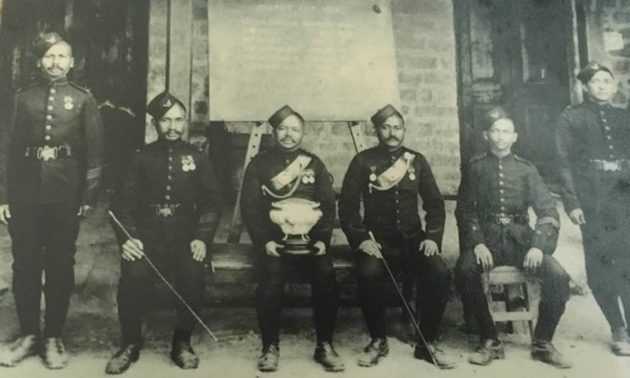History: Britain, Nepal and some questionable treaties
12 July, 2018

More than two centuries ago, The British East India Company wanted three things from Nepal: to open a trade route to Tibet, establish a British Resident in Kathmandu and weaken the Gurkha Kingdom of Nepal.
The British used treaties with Nepal that many described as unfair and lopsided to achieve those goals.
After the British were defeated in battle by the Gurkhas in 1767, the first chance came in during the first Sino-Nepalese War of 1788-1792. The Nepalese initially invaded Tibet, but when the Chinese Emperor’s army arrived at Betrawati River near Nuwakot, Nepal Durbar sought help from the British and the first treaty of 1792 was signed.
By the time Britain’s Captain Kirkpatrick came to Kathmandu as the first British envoy, the war was already over. He did not come with arms and ammunition as the Nepalis had requested. Instead, he studied the geographical, political and trade strategy of Nepal and Tibet and went back. The trade treaty of 1792 had given the British the rights to sell British goods in Nepal, while Nepal had to pay a 2% duty to the British for all the products coming through Indian ports.
The next agreement was signed in 1801. When then King Rana Bahadur Shah abdicated and took refuge in Benares, the Nepali rulers wanted to make sure the deposed king did not return to Kathmandu and sought cooperation from the British. In return, the British demanded the establishment of a British Resident in Kathmandu again.
Despite being unhappy with the demand, Nepal had no choice but to accept Captain Knox as the first British Resident in Kathmandu and used various delaying tactics before he was finally allowed into Kathmandu. Due to political changes and instability in Nepal, the mission of Captain Knox did not go as well as the British had planned and he eventually left Kathmandu on March 19, 1803.
The Sugauli Treaty of 1815
Hostilities between the two sides continued for the next decades or so that eventually led to the Anglo-Gorkha war of 1814-1816. After the war, Nepal was forced to sign The Sugauli Treaty of 1815 in which it had not only lost one-third of its territory, but also had to accept the British Resident in Kathmandu and some humiliating terms.
The acceptance of Gurkhas enlisting in the British army was seen by many as one of the most significant losses the nation had suffered. The Sugauli Treaty of 1815 was seen as unfair and one-sided.
Brian Hodgson, the then British Resident in Kathmandu, had then King Rajendra Bikram Shah reinstate the defunct trade treaty of 1792 before he left Kathmandu in 1843.
The treaty of 1860 was the only treaty where Nepal gained the upper hand with the British and the plains of Terai between the Mahakali and Rapti rivers were returned to Nepal as a favor for Jung Bahadur and the Nepal army’s part in quelling the Sepoy Mutiny of 1857-58.
Before 1885, the British had achieved two of its primary goals in Nepal and the third, which was to enlist the Gurkhas in the British Army, was still progressing at a slow pace.
In 1885 Bir Shumsher came to power by sidelining the sons of strongman Jung Bahadur, who had taken refuge in India. In return for not supporting the sons of Jung Bahadur and plotting against the rule of Bir Shumsher, the British demanded free access to the young Gurkhas and the treaty of 1886 was signed.
The agreement of 1886 cleared all obstacles to the direct recruiting of Gurkhas into the British army, which formed 10 Gurkha regiments by the turn of the century.
Gurkhas’ achievements in WWI
Nepal sent 200,000 men, almost 20% of the total youth population, to fight in WWI. One in 10 never returned.
In return for its contribution, a treaty was signed in 1923 which gave Nepal the right to buy arms and ammunition from nations other than the British. The Gurkhas’ contributions in WWI played a big role in getting the treaty signed.
The coronation of King Edward VII. Photo: The family of subedar Gambhirsing Gurung
In WWII, the Gurkhas were again sent to fight and took heavy casualties. After the partition of India, the Tripartite Treaty of 1947 signed by the British, India and Nepal was signed. Many critics called it a bilateral treaty between the British and India which was later imposed on Nepal.
The agreement, which was supposed to protect the pay, pension and welfare of the Gurkhas, ended up being a tool to exploit the Gurkhas for the next four and half decades.
After the British had gone, Nepal and India signed a new trade treaty in 1950, and they already have seen many amendments since then.
